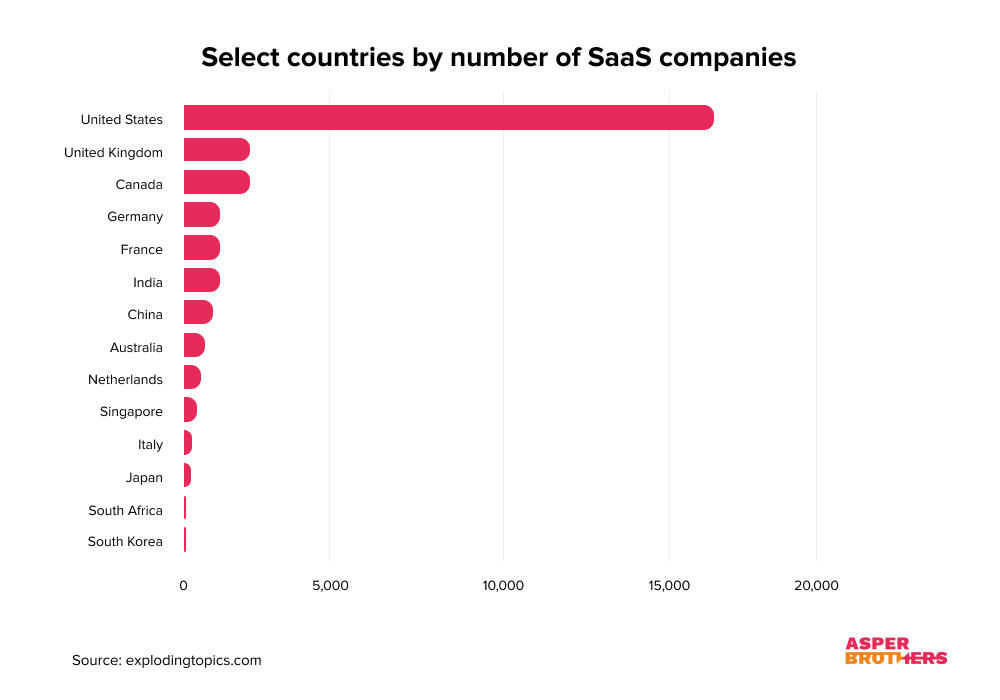Application Performance Monitoring - Tools and Best Practices
Application performance monitoring allows you to have an accurate view of what's going on with your application as a whole...

If market predictions are to be believed then this sector will soon touch the mark of $623 billion. The achieving year is likely to be 2023. The main reason behind such huge popularity and significance is the ubiquity of SaaS solutions. They deliver more than expectations in any industry type.
In this post, we are going to throw light on the efficacy of the SaaS business model for digital projects. If you’ve anything to do with the generation or delivery of digital projects, this post is of great help.
Let’s begin with knowing SaaS a little more.
SaaS stands for Software as a Service. It’s a type of service delivery where pre-developed software is provided to the end-users as per the need of the moment.
Offered solutions are deployed on the cloud and are accessible via a simple login or sign-up. These Cloud Computing enabled software are optimized for web interfaces, mobile phones, desktops, and various other data-driven devices. To enjoy these services, customers need to pay a monthly or yearly fee.
SaaS companies maintain databases, servers, and networks to make sure that software is available via the internet.
There is a wide range of categories under which a SaaS company can proffer a SaaS solution.

SaaS solutions today cover practically all areas of a company’s operations. Almost every business process can be supported with SaaS.
Pricing is a crucial aspect to consider if you wish to have a successful SaaS business. The offered options are:
More than 60% of businesses deliver SaaS services as a freemium product.
The Freemium model is a marketing strategy that works great to expand the customer base, improve customer churn rate, a guaranteed recurring model, and lure new customers.
If recent market research is kept into consideration then the Freemium price model will help a SaaS business to make the new customer at the rate of 4%, which is good.
The prime reason to offer a freemium price model is to provide software exposure to more and more new customers so that you’ve more possibilities.
There is one more thing to learn about the SaaS sales approach. There are two major ways that a SaaS solution makes sales. The first one is the low-touch sale and the other one is high-touch sales.
The approaches depend on B2C or B2B model. When a SaaS product could make sales on its own via websites and emails, it falls under low-touch SaaS sales.
High-touch SaaS sales demand human efforts to sell a SaaS product.
The SaaS market is growing at a steady CAGR rate of 18% for the past many years. SaaS solutions are preferred by over 78% of small businesses and start-ups.
In the healthcare industry, the SaaS adoption rate is 20%, which is very much decent.
All these statistics are impressive and also made us wonder why the SaaS business model is loved so much. Well, we can solve the mystery.
The SaaS business model is the best way to reduce customer acquisition costs and increase the possibilities of recurring revenue. But, that’s not the end of it. Many advantages will be available to bag with the implementation of a SaaS strategy. For instance:
Every business loves to grow and needs to have an IT infrastructure that supports growth without much-added investments. Gladly, the SaaS business model works in that manner only. SaaS companies offer a wide range of subscription models with varied features/facilities.
One can choose as per the present need. Features addition and deletion are very much easy and stress-free. This is why businesses at a growing stage prefer SaaS solutions.
When there is software that should be maintained at every stage, the operational cost has to be controlled and limited. SaaS company will look into the product development, maintenance, and update. As an end-user, you only have to worry about the subscription fee which is affordable in most cases.
If you’re not a SaaS solution user but a SaaS service provider or vendor then get ready to experience recurring revenue. With the monthly subscription model, vendors will have ongoing sales that build up security.
With an on-premise solution, updating the technology or version is a very tedious and cost-extensive task. But, technology update is required to make sure that only relevant techniques are used in the workplace.
With the SaaS business model, it’s easy for end-users to enjoy the one-click update. Whenever an update is available, the SaaS company will notify the end-user and customers only have to allow that update to start. That’s it.
The SaaS business model grants more control to both the customers and the vendors. As customers, you can decide what features to use and what to ditch, which subscription to buy, what app to download, and so on. This extensive control allows end-users to have an utterly customized solution that adds up the utility of the organization and make it more productive.
There is no compromise on the control even when you’re a SaaS vendor. SaaS company owners have the freedom to decide the development environment, features, pricing model, and other aspects.
When we develop SaaS products, we observe that our clients appreciate, above all, the flexibility of this model. Scaling of the business can be done organically, based on the growing popularity of the product. Thanks to that development is stable and adding new features is based on the real demand of end-users. COO, ASPER BROTHERS Let's Talk
Setting up SaaS businesses will bring success only when it follows a strategic approach and goes through pre-defined stages.
The three stages of SaaS start-ups are:
At this stage, the focus remains on fabricating the idea, procuring the resources that are required to bring an idea into reality, and finding ways to market this new product. The cloud-based software is launched in the market and is promoted as much as possible.
If your SaaS start-up has managed to firm its feet in the industry and is experiencing wide adoption then congrats as your business has reached in hypergrowth stage. SaaS start-ups reaching this stage demands high data expansion, more bandwidth, and extra technicalities to support more user accounts.
SaaS start-ups that reach this stage will have leveled business model. Those who manage to reach this stage will experience healthy profit, have a high customer retention rate, build new users, and reduce the churn rate.

The U.S. today is unrivaled when it comes to the number of SaaS being created and operating successfully.
If you’ve already made up your mind to offer your service as SaaS, the first thing you should do is to learn about the metrics that indicate business growth. The key performance indicators or metrics to track with a SaaS solution are as mentioned below.
Use churn rate to determine how many customers have ditched the existing annual or monthly subscription. Tracking churn rate is crucial in a SaaS business model as it helps a SaaS business to measure the customer satisfaction rate. The acceptable churn rate in a SaaS business model is 5-7%.
CAC is the amount one has to spend to take a new customer on board. It’s crucial to find out whether or not a SaaS business is going well.
MRR is an approximation of per month revenue that a SaaS business is expecting.
The expected recurring revenue that SaaS businesses or service providers expect annually.
This metric is useful to track the revenue a software company or SaaS business model-based organization is getting per paying customer.
CLV is the average revenue that a SaaS industry venture is getting from a customer during the active subscription.
This metric is useful to find out the percentage of customers that remains committed and continue paying for a subscription.
The SaaS model is one of the most popular ways of distributing software and digital services today. Additionally, the subscription model of such services is becoming a common method of providing stable profits to businesses. However, in order to effectively develop SaaS, it is necessary to remember that first of all the quality of provided services is important and how we respond to the real needs of users and customers.

Application performance monitoring allows you to have an accurate view of what's going on with your application as a whole...
Cloud computing is quickly gaining prevalence on the market. That’s hardly surprising - cloud infrastructures have revolutionized the way we manage...
It takes a lot to bring a business idea to life and conducting sufficient and comprehensive market research beforehand is one...